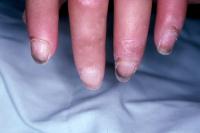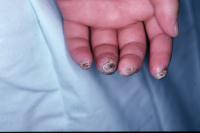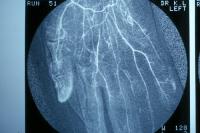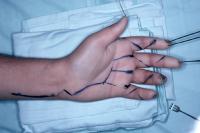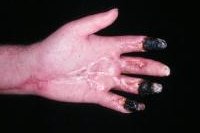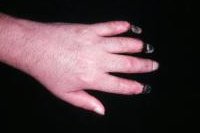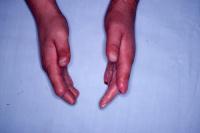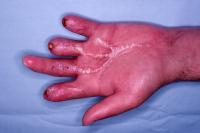| Severe peripheral vascular insufficiency
associated with connective tissue disease is usually due to a combination
of vasospastic (Raynaud's) and fixed (proliferative vessel wall changes)
factors. Periarterial sympathectomy is one approach to this problem. This
technique involves stripping the adventitia from the affected vessels,
which both removes the sympathetic nerve innervation (preventing nerve
mediated vessel constriction) and externally decompresses the vessels,
allowing dilation of the vessel lumen. The original description by Flatt
involved stripping a small length of the vessels at the level of the common
digital artery bifurcation. This was later expanded by O'Brien and others
to include the entire vascular tree, from forearm to fingertips - referred
to as a radical periarterial sympathectomy. This patient was treated on
O'Brien's service and shows some of the difficulties associated with this
procedure. |
